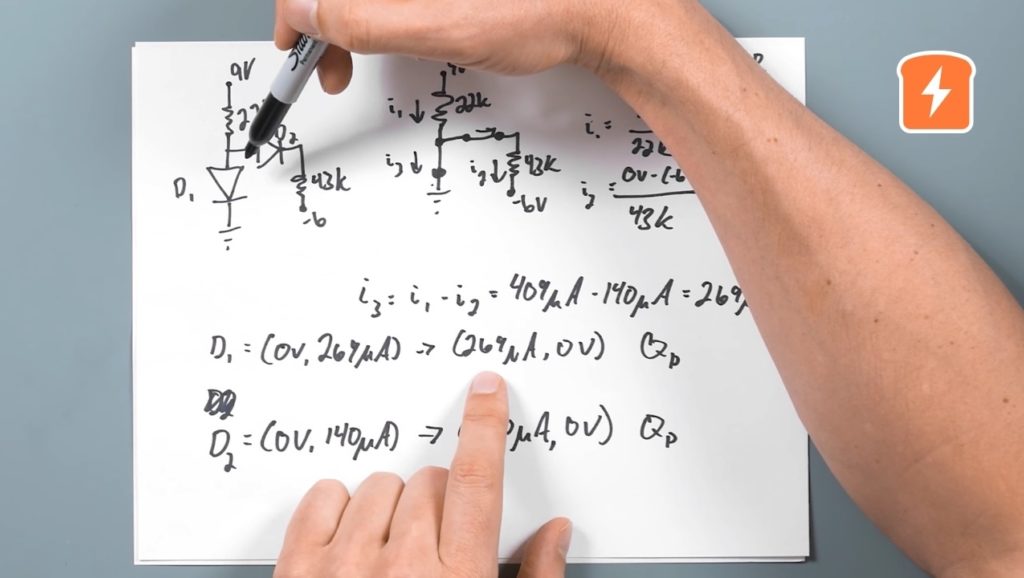Forward Biased
A diode or a pn junction is forward biased when the positive side of external bias voltage is connected to the p region of the diode (the anode) and the negative side is connected to the n region (the cathode). In this condition, current is allowed through the pn junction.
VD < 0 - when the diode is operating with reverse bias, we consider the diode “off” or nonconducting because the current is very small.
Microelectronic Circuit Design, 4th Edition by Richard C. Jaeger & Travis N. Blalock
In forward bias, the positive terminal of the battery is connected to the p-type material and the negative terminal is connected to the n-type material so that holes are injected into the p-type material and electrons into the n-type material. The electrons in the n-type material are called majority carriers on that side, but electrons that make it to the p-type side are called minority carriers. The same descriptors apply to holes: they are majority carriers on the p-type side, and minority carriers on the n-type side.
A forward bias separates the two bulk half-occupancy levels by the amount of the applied voltage, which lowers the separation of the p-type bulk band edges to be closer in energy to those of the n-type. As shown in the diagram, the step in band edges is reduced by the applied voltage to φB−vD. (The band bending diagram is made in units of volts, so no electron charge appears to convert vD to energy.)
Under forward bias, a diffusion current flows (that is a current driven by a concentration gradient) of holes from the p-side into the n-side, and of electrons in the opposite direction from the n-side to the p-side. The gradient driving this transfer is set up as follows: in the bulk distant from the interface, minority carriers have a very low concentration compared to majority carriers, for example, electron density on the p-side (where they are minority carriers) is a factor exp(−φB/Vth) lower than on the n-side (where they are majority carriers). On the other hand, near the interface, application of voltage vD reduces the step in band edges and increases minority carrier densities by a Boltzmann factor exp(vD/Vth) above the bulk values. Within the junction, the pn-product is increased above the equilibrium value to:[1]









